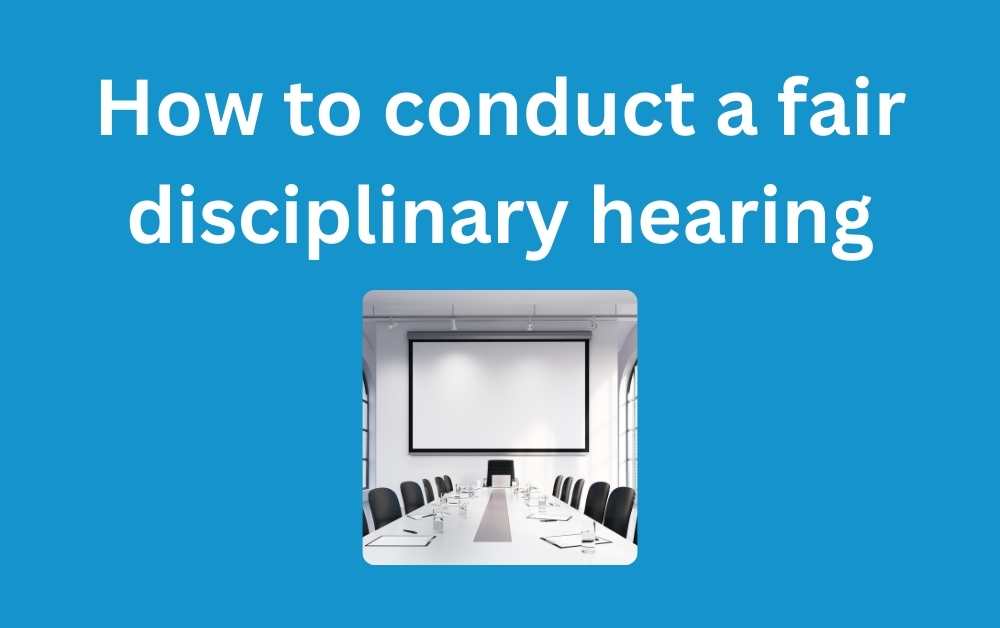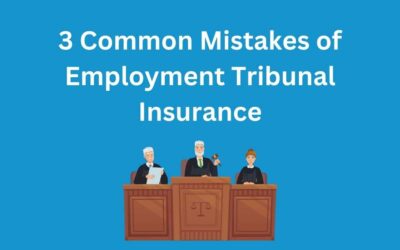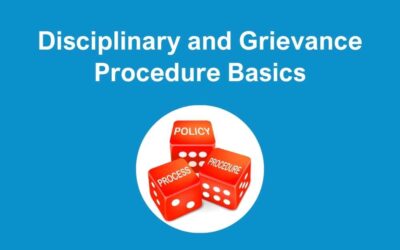Dealing with employee misconduct is never easy, but knowing how to conduct a fair disciplinary hearing is essential for any employer or manager. A well-managed process not only protects your organisation legally, but also reinforces fairness and transparency in the workplace. Whether you’re handling a minor issue or a more serious breach of conduct, following a structured and impartial approach is key.
One of the tools you have at your disposal is your disciplinary procedure. This is a valuable resource to help you deal with problems in your workforce. However, if the disciplinary process is not carried out correctly it could damage your business and escalate to an Employment Tribunal. In this article we set out some key steps you should take to help you conduct a fair disciplinary hearing and to avoid the potential escalation.
Preparing for the Disciplinary
INVESTIGATE, INVESTIGATE, INVESTIGATE
It is fundamental that before you even contemplate disciplining your employee you investigate the issue. Where possible, this should be done by someone who is not directly involved in the issue.
The main purpose of the investigation is to:
- Discover if the case can be upheld.
- Make sure the process is fair, taking in to account every side of the story.
- Collect all relevant details of the allegations and supporting evidence to ensure a fair and thorough disciplinary process.
Your investigation should avoid opinions. This may be someone else’s opinion about what happened or what they, or you, think the employee did. An investigation is not the place for this.
When conducting an investigation, gather all relevant information. This includes emails and also witness statements, to fully understand the issue. If the disciplinary officer decides there’s no case to answer after reviewing the evidence, the process can be closed. However, if a case is identified, the next step is to schedule a disciplinary hearing and formally invite the employee in writing.
Disciplinary Invite Letter
Once you have established the facts, you need to invite your employee in to a formal disciplinary meeting. You should do this in writing. The main purpose of this letter is to notify them of the issues that will be discussed, provide an understanding of the process, and also give reasonable time to prepare.
Your invite letter, as a minimum, should include:
• Date, time and location of the disciplinary meeting
• Who will be present at the meeting
• Your employee’s right to be accompanied at the meeting
• Details of allegations being made
• The potential outcome of the meeting
Do you need help writing a disciplinary invite letter? Contact our HR Consultants today.
The Important of Advance Notice
As already mentioned a disciplinary meeting should never come as a shock to your employee, they should be expecting the formal disciplinary invite letter and also know that they are to attend a disciplinary meeting.
You should always ensure that you provide your employee with reasonable notice ahead of any disciplinary meeting. We suggest a minimum of 2 clear days’ notice between the day they receive the invite letter and the day of the proposed disciplinary meeting.
This notice is to allow your employee reasonable time to prepare for the meeting and arrange to be accompanied if they wish.
Prepare Before the Hearing
It is imperative to ensure you are prepared for the meeting – make sure you book some time out in your diary for this. Therefore, you should review the investigation documentation and be familiar with this and with the allegations that are set out in the disciplinary invite letter.
As part of your preparation you should list some questions that you want to ask your employee. The best disciplinary meeting questions to use are open questions, for example “tell me…”, “describe to me”, rather than a question that requires a simple yes or no answer.
The reason your questions are important is that it is the answers to these that will help you to make an outcome decision on the disciplinary issue in question.
How to Structure a Fair Disciplinary Hearing
A well-structured disciplinary hearing helps demonstrate that you’ve followed a fair and transparent process. Every meeting should follow a clear format with a beginning, middle and end — and also allow enough time to cover each stage properly.
1. Start the Hearing with Clear Expectations
Begin by introducing everyone present and outlining the purpose of the meeting. Set expectations by explaining how the hearing will be conducted.
At this point, it’s important to confirm procedural details, such as:
-
This is a formal disciplinary hearing
-
The employee was invited in writing
-
They have the right to be accompanied
-
The allegations will be discussed based on the content of the disciplinary invite letter
This helps ensure you’re following a fair disciplinary procedure and can demonstrate this if required later.
2. Present the Issues Clearly
The middle of the hearing is where you review the concerns in detail. Stick to the allegations outlined in the disciplinary letter and any additional documentation shared in advance. Good preparation is essential to keep the discussion focused and fair.
3. Give the Employee Time to Respond
Allow the employee a reasonable amount of time to respond to each point. Furthermore, listening carefully and documenting their responses is a key part of a fair process.
4. Adjourn to Make a Decision
Once all issues have been discussed and the employee has had their say, adjourn the hearing. This gives you time to review the evidence, reflect on what was said, and decide on the most appropriate outcome based on the facts.
Make a Reasoned Decision
After considering all the information, decide on the disciplinary outcome. This could include:
-
No action
-
A verbal or written warning
-
Suspension
-
Dismissal (only where appropriate)
Always confirm the outcome in writing and also inform the employee of their right to appeal.
Document the Process
Keep detailed notes and records of each stage. This protects you legally and shows transparency.
Common Mistakes to Avoid
-
Rushing the process
-
Failing to follow your own disciplinary policy
-
Not giving the employee enough time to prepare
-
Showing bias or predetermined decisions
Get Expert Support
If you’re unsure about any stage of the disciplinary process, our team at The HR Booth can help. We provide practical advice to ensure you’re legally compliant and confident in handling workplace issues.
Need help with how to conduct a disciplinary hearing? Contact us today for professional HR support.






